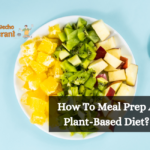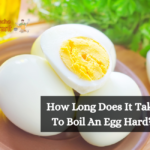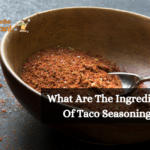Of course, only some people who choose to reside in an apartment community are on a tight budget, but let’s face it: the majority of us are. No matter where or how we choose to live, budgets help us keep our expenditures and lifestyles on track. So, best things to eat on a budget.
Cooking alone can be intimidating, and grocery purchasing is even worse. In this article, we will discuss easy-to-prepare meals, the types of groceries and foods with a long shelf life, and relatively healthy foods so that you are not constantly consuming processed foods.
Best Things To Eat On A Budget
Here is a list of cheap food options:
1. Apples
Burgess recommends a timeless classic.
“Apples are a nutritious, inexpensive fruit that you can purchase year-round. “They are high in soluble fiber and immune-boosting vitamin C,” says Burgess, adding that Envy apples are her favorite.
Burgess explains, “They have a balanced sweetness, a delicious crunch, and remain white longer when cut.”
When they wrote this article, Walmart was selling Envy apples for $1.37 each to indicate how much you’ll likely spend on apples.
Burgess suggests coupling Envy apples with a protein source such as peanut butter, cheese, or nuts to feel fuller for longer.
2. Bananas
Bananas are relatively inexpensive among fruits, and for what they provide, they are a bargain.
“(Bananas) get a bad rap for being rich in sugar, but the sugar found in fruit is not a major health concern,” says Jenn LaVardera, a registered dietitian and wellness expert in Southampton, New York.
Bananas contain health-promoting antioxidants in addition to vitamin C, manganese, vitamin B6, and potassium. They contain heart-healthy fiber as well. Typically costing less than a dollar per pound, they are the most outstanding value in the produce section, according to LaVardera.
At the time of writing, a pound of bananas costs 49 cents at Kroger.
3. Beans
VanBeber has been instructing students in one of her classes on preparing a delectable and nutritious meal for four for less than $10. Even at current prices, “it is certainly possible,” she says.
Dry beans are the least expensive, but according to VanBeber, many people need the knowledge and cooking abilities to prepare them. If so, she recommends canned legumes.
VanBeber encourages the consumption of legumes and the stockpiling of pinto beans, black beans, garbanzo beans (chickpeas), navy beans, and black-eyed peas.
“One of the nutrients that we should consume every day is legumes. “They provide protein fiber and enhance the microbiome, which means they help maintain a healthy gut, which in turn helps build the immune system,” says VanBeber.
4. Brown Rice
Brown rice is a relatively inexpensive pantry staple. Note that this dish is simple to prepare and can be incorporated into various dishes. Additionally, it is high in fiber and contains essential minerals such as magnesium and manganese.
If someone has celiac disease, rice is an excellent gluten-free alternative. Due to its fiber content, it may aid in appetite control and in lowering cholesterol levels.”
The price of brown rice will differ depending on where you shop and the discounts available, but you can typically purchase several pounds for a few dollars.
5. Chicken
You may reasonably raise an eyebrow at the term “cheap chicken.” Inflation has caused nearly all food prices to rise, but poultry has been struck particularly hard. The cost of chicken has increased by 13% over the past year but decreased by 0.8% over the past month.
VanBeber contends that purchasing a whole chicken is still economical, and she adds that it is simple to roast. It will also assist if the chicken is on sale at the local supermarket.
“You can expect approximately one or two servings per pound of bone-in chicken. “It depends on how hungry individuals are and who is eating,” says VanBeber.
6. Chuck Roast
Author of HealthyRecipesBlogs.com Vered DeLeeuw states, “Because chuck roast is typically inexpensive and fatty and filling, you only need a small portion to feel full and satisfied.” A boneless beef chuck roast costs $6.99 per pound at Kroger.
7. Corn Tortillas
VanBeber states that she likes to keep corn tortillas on board, adding that they are a product made from whole grains. Whole grains are far more nutritious than refined grains, and VanBeber adds, “Wheat flours are only sometimes whole grains unless labeled as 100% whole wheat. Typically, corn tortillas have half the calories of wheat tortillas.
Also, maize tortillas are affordable. At Walmart, a 30-pack of maize tortillas is currently $2.24. Approximately 7 cents per tortilla.
“Then you may spread it with what sandwich ingredients you want,” says VanBeber. “I enjoy spreading hummus or guacamole on a maize tortilla, then topping it with additional vegetables or canned beans. Also, you can use corn tortillas to create tortilla chips. It is a means to regulate the fat and sodium content of the chip.”
8. Eggs
The price of a dozen eggs differs based on the place you shop and where you reside, and whether they are inexpensive may depend on how you define inexpensive.
Rachel Dyckman, owner of the nutrition private practice Rachel Dyckman Nutrition Company in New York City, affirms that they are indeed healthful.
“Eggs are rich in minerals that support mental wellness, such as choline and lutein,” Dyckman says, adding, “They can be stored in the refrigerator for three to five weeks without spoiling.”
9. Flour
Steffa Mantilla, who blogs at MoneyTamer.com about paying off loans, living frugally, and accumulating wealth, suggests returning to the fundamentals and preparing some foods from scratch with flour. “It is versatile because you can use it to make bread, pancakes, and biscuits,” Mantilla explains.
Flour is also reasonably inexpensive. According to the BLS, the average price per pound of flour is approximately 52 cents. Numerous grocery retailers sell 5-pound bags for roughly $2.60 per bag.
10. Frozen Blueberries
Burgess is a devotee and claims that frozen blueberries are affordable. When writing, a 16-ounce container is on sale at Walmart for $2.98.
“Frozen blueberries are a convenient and inexpensive method to improve your diet’s nutritional value. They are frozen at the zenith of freshness, preserving their nutritional value.
As with fresh blueberries, frozen blueberries are an excellent source of fiber and contain only 80 calories per cup, according to Burgess.
She adds that they will last for months in the storage.
11. Frozen Vegetables
Frozen vegetables are inexpensive and nutritious, and they can be relied upon when your pantry and refrigerator are running low on food. You can purchase them in stores or preserve excess produce from your garden or the local farmers market.
Dana White, a sports nutritionist and clinical instructor of athletic training and sports medicine at Quinnipiac College in Hamden, Connecticut, recommends frozen vegetables if there are few raw vegetables available during the season.
“These options are equally healthy and fresh, and you can get a lot more use out of them since they stay in the freezer,” she says.
Thank you for reading….










